What is common between business, sports, politics, and life? A good person, when in charge, brings the best out of his team! This is precisely why good leaders are integral to success in all walks of life. And this is also the reason why there exist many different schools of thought when it comes to leadership. In this piece, we will take a closer look at functional leadership.
What Is Functional Leadership?
The onus of getting the team to perform in a cohesive and coordinated manner is on the leader. There are many instances where the team leader is known for his charismatic style.
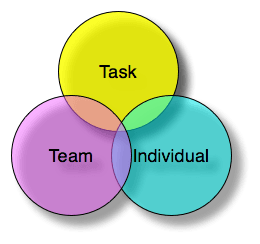
However, there are times when different people step up and perform the assigned tasks. Thus, there are no designated leaders. This is the defining trait of functional leadership. The focus is on the ‘what’ and not the ‘who.’
The functional leadership style is visible in organizations where people enjoy a fair degree of autonomy. This enables them to bring about efficient processes regardless of their possession. This proves that any person can demonstrate functional leadership given the right situation.
Models of Functional Leadership
There are several models of functional leadership. We shall examine two of the most popular ones here:
John Adair’s action centered leadership
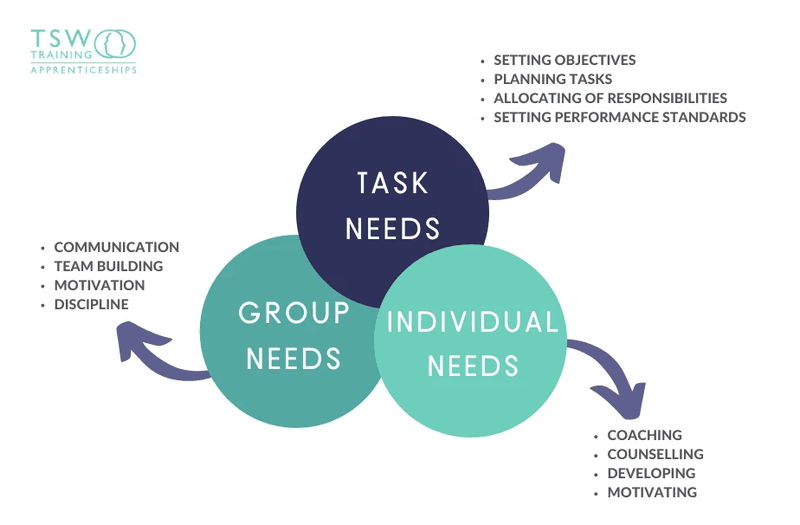
This is among the most well-known models of functional leadership. It consists of three overlapping circles, and each represents a separate area of leadership.
- Task: This takes place through collective effort and not by a single individual
- Team: A unit that will perform when all individuals are capable and contribute to the overall objectives
- Individuals: People who need a challenging and fulfilling task to stay motivated.
Eight Functions of John Adair’s Model
The action-centered leadership model consists of the following functions.
Defining the task: The end goals must be defined clearly at the outset. Furthermore, each goal must be realistic, measurable, achievable and, time-bound.
Planning: It is necessary to have back-ups and alternatives in place. As hurdles can occur at any time, it helps to be prepared for any situation.
Keeping the team informed: The leader must brief all the team members of their specific responsibilities. Also, he should ensure successful cross-team collaboration. This is in addition to keeping the team members motivated.
Establishing Control: Functional leadership is all about outcomes. So a leader must set up processes that maximize productivity. Additionally, he should look into the efficient use of resources.
Evaluating Results: Periodic evaluation of the team’s progress helps determine the productivity of the team and its members. Also, it assists in setting up remedial measures to improve performance if needed.
Inspiring the team: Even the best processes fail if the team lacks motivation. Therefore, a leader must constantly recognize and reward individual team members for ensuring a sustained contribution from the team.
Bringing people together: A good leader can make a diverse team with distinct abilities and personalities work together. This also helps in the best possible allocation of work as each person is assigned the most suited for.
Leading from the front: A team will follow their leader only if they believe in his ability and vision. Hence, it is imperative that a leader practices what he preaches.
Kouzes and Posener’s Exemplary Leadership Model
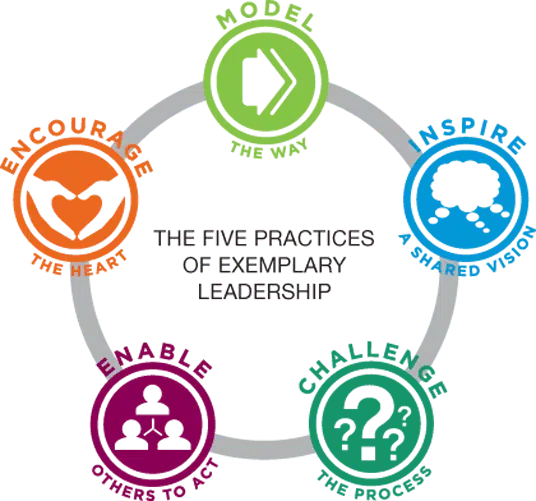
This is more comprehensive than Adair’s model and targets senior leaders in organizations. The Kouzes model has distilled the concept of leadership into five understandable principles.
Challenging the process: Leaders have to be open to new approaches and challenge the status quo. This way, they can encourage the team to take risks and make mistakes. Yet, the overall goal is to move the organization.
Inspiring a shared vision: Leaders who have a clear vision for the future can galvanize their team into taking action. Their vision has the capability of attracting people.
Enabling others to act: Good leaders must build teams that embody the firm’s spirit and are effective. These teams are confident, productive, and efficient. Most importantly, they have the tools and the information to get the desired results.
Modeling the way: Being the leader, a person must ensure that he sets the standards he expects others to follow. Also, he must break larger organizational goals into smaller achievable targets. Another way he can help his team is by reducing bureaucracy and having simple processes in place.
Encouraging the heart: There are definitely going to be hurdles in the way of realizing larger organizational aims. So, leaders need to boost team morale and celebrate small victories.
Parts of the Functional Leadership Model
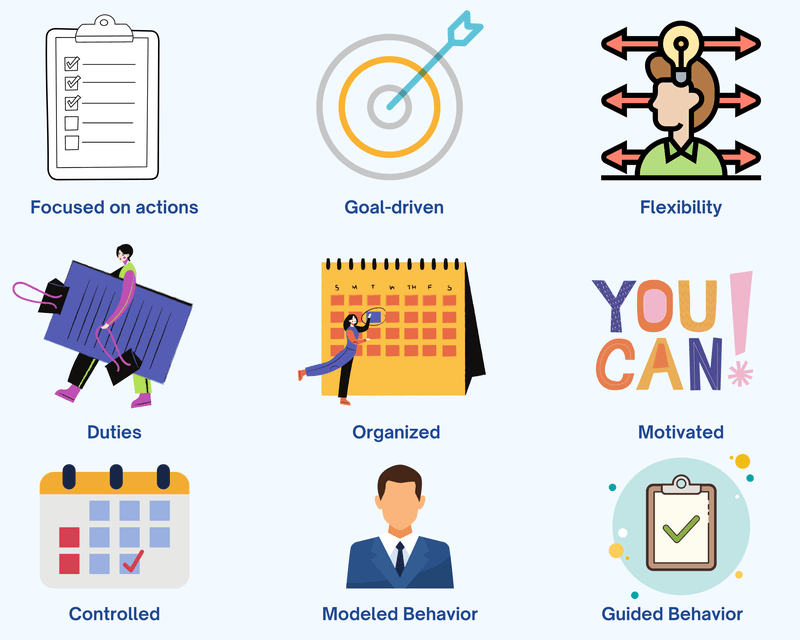
From the two models above, it is clear that there are certainly key components of functional leadership. Let us examine them below:
Focused on actions
Even though officially there may be one leader, each member has a specific responsibility that plays a crucial role in the team’s overall success.
Team sports like basketball and soccer are great examples of this. Though the teams have one captain, each player has a specialized skill that is instrumental to the team’s chances of victory.
Goal-Driven
The group’s accomplishments are the sole criteria to judge the ability of a team and its leader here. Any organization is only concerned with the outcomes rather than individual actions.
Flexibility
The leadership that a single individual usually shows in any situation is disseminated amongst all group members. Therefore, everyone takes on some responsibilities to accomplish the end goals. So the term ‘leader’ is flexible in this situation.
Duties
Understanding one’s role and responsibility form the bedrock of functional leadership. So, everyone must know what they have to do. Additionally, they must also make sure that they have the necessary tools and responsibilities for the job.
Organized
Once the project’s end goal has been finalized, the project can be carried out independently. Therefore, a proper record of the various teams with the tasks assigned to each member is a necessity. And functional leaders ensure that this record is maintained so that the team’s performance can be measured.
Motivated
In a functional leadership setup, the role of a leader does not end after assigning tasks to the members of the team. He also must ensure the team is motivated enough to see the work through until the end.
Controlled
Before starting work on a project, it is essential to decide its scope. This achieves two things:
- It ensures that the project stays on track and sticks to the scheduled timelines.
- The team leader sees that each member has access to the resources and tools to complete the tasks on hand.
Modeled Behaviour
A leader should lead by example. This will inspire the team members to emulate him and follow his lead. Moreover, the team will be willing to go the extra mile for a leader whose vision they believe in. Also, they will bring the highest level of professionalism and transparency to the table.
Guided Behavior
Although functional leadership enhances the degree of autonomy, a periodic assessment of the team’s performance is required. This brings back the team’s focus and ensures that they get regular feedback about the quality of their work. As a team lead, one can track if the team will meet the deadlines or not.
Advantages of Functional Leadership
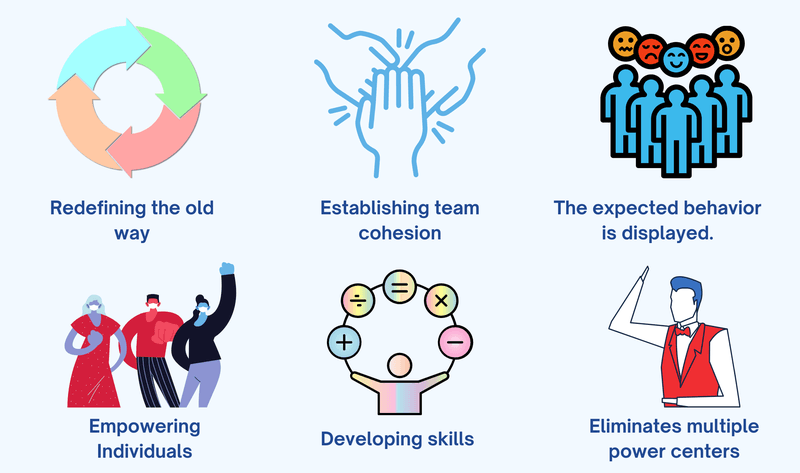
There are several benefits to the functional leadership model. Some of them are:
Redefining the old way
Traditionally, the leadership position meant that one person maintained all the power with him. In the functional model, some power and responsibility are dissipated across the team. Hence every person gets a chance to be in the leader’s shoes.
Establishing team cohesion
This model aims to establish cohesion in the team. To do this, it focuses on equity in the distribution of tasks and recognizing the achievements of each member.
The expected behavior is displayed.
Based on the leader’s actions, the team understands ideal workplace behavior. So, in this model, the leader drives change from the top.
Empowering Individuals
The functional leadership model results in the holistic development of an individual. The sense of ownership that this leadership model creates is responsible for equipping a person to take on more responsibilities at the workplace.
Developing Skills
Each person on the project gets ample opportunities to hone their skills. This is due to the equitable distribution of work and responsibility in the functional leadership model.
Eliminates multiple power centers
This model prevents miscommunication and ensures a single chain of command as a single person is responsible for the team.
In Conclusion
There are several good aspects to the functional leadership model, as seen so far. However, there can be situations where the domain specialists might feel isolated in this setup. But a smart leader will be aware of this and ensure transparent communication to prevent any misunderstanding.

Ranu Kumari is a Professional Writer and a Marketing enthusiast who currently runs her own Marketing Consultancy, LatitudeBOX. She has written promotional articles for multiple brands and has published her work in Scopus indexed journals. She is passionate about expressing her thoughts and ideas to connect with her readers in a voice that they understand.

Hey, I’ve been following your leadership articles and I think there is some overlapping. I just wanted to give you with a quick heads
up! Other than that, excellent site!
Thanks for the feedback, Erick!
Hi,
I joined the Army as an Officer in 1978 and was immediately introduced to Adair’s Principals and have been trying to apply them ever since. I am currently trying to introduce them to a business led by a very charismatic and Multi Masters Graduate obsessed with appointing managers on their Academic qualifications none of whom have an ounce of Management experience. Do you have any other simple explanations of the system to share